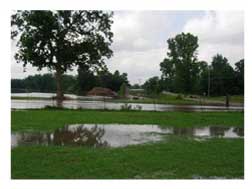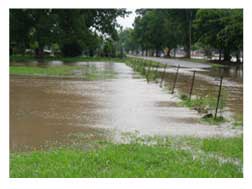Magazine Must Haves For The Novice Horseman
I just received my Horse & Rider magazine. This is just one of my magazines that I read front to back. There is an article in this issue that you, as a novice looking to buy a horse, MUST read!! The article is “7 SIGNS YOU SHOULD WALK AWAY FROM A HORSE FOR SALE (OR SELLER)” by Bob Avila.
This article tells you what bad habits to look for. The article goes into bad attitude, this would be cranky, rude or impatient. It tells you about being barn sour and also about not respecting your space. There is a small section of information about lameness. There are also signs to look for in the seller. This article is only 4 pages long, but it does give you information that you will need when you go to look for that dream horse. READ IT!! & READ IT again!!
And when you are done with this article, read the one from Clinton Anderson on getting your foot shy horse to let you handle those ticklish feet. Oh and don’t miss YOUR HORSE YOUR LIFE for a few pointers. There are some really good common sense things a novice horse owner may not know. There are also on going articles on conformation, riding & horsemanship. AND THIS IS JUST 1 ISSUE!!!
If you don’t have this magazine . . . go out now & get it at your local bookstore, drug store or grocery store. It is well worth your time and effort for this one. This is just one MUST HAVE magazine for any novice. It is just full of information. There is also EQUUS. I highly recommend this magazine for the latest in horse health. Practical Horseman & Dressage Today are outstanding magazines for the owner who leans more towards English riding.
These are the magazines that I subscribe to for the latest information in health, riding and horse related products. Over the years, I have gotten an enormous amount of information from these magazines. There have been articles on legislations that effect the horse world. There have been articles on which hay may be better for your horse, oats vs sweet feed and which plants in your pasture are deadly to your horse.
If you don’t have a subscription for any of these, check out the MUST HAVE MAGAZINES in the right column of my blog. Just click on the magazine that you would like to subscribe to.
Subscribe today, don’t miss another issue!

 June 15, my trainer & I were standing in the lot by the barn watching the water rise from the creek just south of us. It was slow but relentless. The front lot had small ruts made by my car from the night before as I packed all of my leather goods from the tack room. With each hour, the grass slipped out of sight. The ruts disappeared under a small rush of water that eventually became a small stream in itself. This stream split in two with one half snaking its’ way to the arena and the other half making a straight march for the barn & back pasture. The back pond soon had all of the back pasture consumed except for 2 small rises on which 2 horses were standing. The 5 acre south pasture was becoming a small lake as the creek rose higher. The horses there kept grazing just in front of the moving water line. At 2:00pm, the creek finally crested and the worst of the damage was over. The water had managed to enter the barn and only flooded 2 stalls. We never had to make the decision to move the horses, but there was a plan if needed.
June 15, my trainer & I were standing in the lot by the barn watching the water rise from the creek just south of us. It was slow but relentless. The front lot had small ruts made by my car from the night before as I packed all of my leather goods from the tack room. With each hour, the grass slipped out of sight. The ruts disappeared under a small rush of water that eventually became a small stream in itself. This stream split in two with one half snaking its’ way to the arena and the other half making a straight march for the barn & back pasture. The back pond soon had all of the back pasture consumed except for 2 small rises on which 2 horses were standing. The 5 acre south pasture was becoming a small lake as the creek rose higher. The horses there kept grazing just in front of the moving water line. At 2:00pm, the creek finally crested and the worst of the damage was over. The water had managed to enter the barn and only flooded 2 stalls. We never had to make the decision to move the horses, but there was a plan if needed. this is not a question that the ordinary person would normally ask. After all, if you have never experienced a flood, who really thinks of it until the water is rising on your property. The first time it flooded, I was called at work to come help move the horses to the town’s fairgrounds. My husband & I helped move 22 horses & 3 tack rooms in less than 3 hours. We made 3 trips with my 2-horse trailer from the barn to the fairgrounds. Since my late trainer was well known in the area, friends came with other horses trailers, trucks or just time to baby-sit at the fairgrounds while the rest of us made mad dashes back & forth. The horses stayed at the fairgounds for 4 days. We cleaned up the barn, removed all shavings and spread lime on still wet floors. Then it was time to move back.
this is not a question that the ordinary person would normally ask. After all, if you have never experienced a flood, who really thinks of it until the water is rising on your property. The first time it flooded, I was called at work to come help move the horses to the town’s fairgrounds. My husband & I helped move 22 horses & 3 tack rooms in less than 3 hours. We made 3 trips with my 2-horse trailer from the barn to the fairgrounds. Since my late trainer was well known in the area, friends came with other horses trailers, trucks or just time to baby-sit at the fairgrounds while the rest of us made mad dashes back & forth. The horses stayed at the fairgounds for 4 days. We cleaned up the barn, removed all shavings and spread lime on still wet floors. Then it was time to move back.
